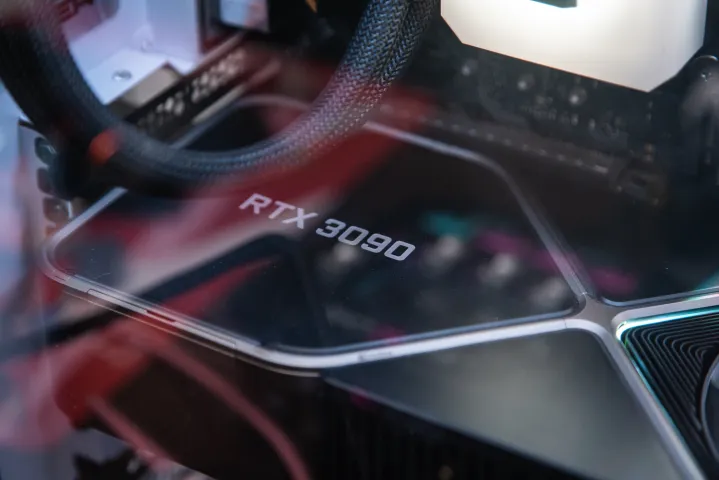Apple’s M1 Ultra chip is here, and the PC review community has had a chance to fact check Apple’s claims. The biggest — almost absurd — claim from Apple was that the M1 Ultra could outperform Nvidia’s RTX 3090.
That’s not the case, of course. It’s hardly surprising, and I wrote about how insane of an idea that was when Apple first announced the chip. But Apple seems hell-bent on providing oversimplified benchmarks when it announces deeply technical products like the M1 Ultra, but all that does is make Apple look ridiculous once those products are here.

Let’s start with the how Apple’s benchmarks are misleading. The graph Apple showed off during the M1 Ultra’s announcement (above) shows the chip outperforming the “highest-end discrete GPU” at a fraction of the power. That discrete GPU is the RTX 3090, which you can find if you look in the bottom-right corner and squint really hard.
The problem is the focus of the graph. It’s not inaccurate, just misleading. Apple is measuring GPU performance against its power draw, which speaks to the efficiency of the M1 Ultra. And it’s a highly efficient chip. The problem is that Apple can also claim that the M1 Ultra is faster than the RTX 3090 when it isn’t.
Apple went for a comparison it could never live up to.
What the chart doesn’t show is how much more power the RTX 3090 can draw. You can see that the graph tops out at 320 watts, which is 30W less than what the RTX 3090 can draw. I own an RTX 3090 Founder’s Edition card, and I can tell you that it often draws closer to 400W when under full load. And that’s without overclocking.
It seems that Apple wanted to say that the M1 Ultra could beat the RTX 3090 and then set out to make a chart to back up that claim. Instead of showing an accurate comparison, Apple cut off the RTX 3090’s power when it was favorable to the M1 Ultra. Benchmarks show that the M1 Ultra is a supremely impressive chip, yes. But instead of showing that off with a fair fight, Apple went for a comparison it could never live up to.
That’s a theme with Apple, the dumbing-down of benchmarks for technical products like the M1 Ultra. I don’t think Apple needs to provide scientifically flawless benchmarks, but assuming that customers interested in the M1 Ultra won’t know anything about competing PC components is insulting. And for those who don’t know about competing PC components, Apple is downright lying.

If Apple, say, compared the M1 Ultra to the RTX 3070, it would still look massively impressive. We’re talking about a system-on-a-chip (SoC) against a powerful discrete graphics card, after all. It seems Apple thinks that’s too complex for some reason, despite the fact that it’s a product targeted at enthusiasts and that nearly every mainstream review of the M1 Ultra mentions Nvidia’s RTX cards by name.
Misleading is one thing — if you’ve been around Apple events for any amount of time, you know that misleading charts are par for the course. In the case of the M1 Ultra, though, they just make Apple look silly. It’s a claim that is so easy to debunk, and it only adds to the narrative that Apple is out of touch when it comes to high-end products.
No reasonable reviewer is going to compare the desktop RTX 3090 to the M1 Ultra inside a mini PC. But by making that claim, Apple opened the door, and now it’s easy for the PC review community to point the finger and say Apple is wrong. It distracts from the point that the M1 Ultra is a powerful and efficient chip, and it didn’t have to.



